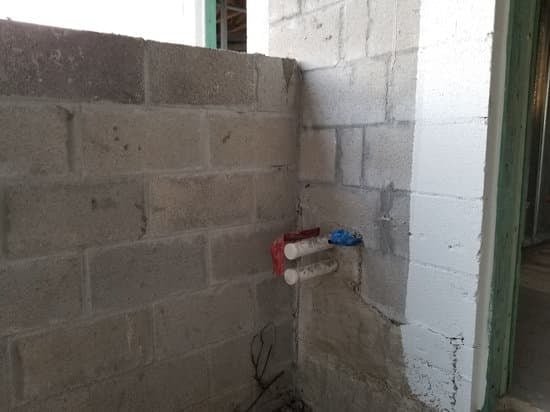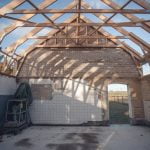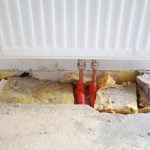Are you wondering, “can I deduct home improvements for 2018?” Understanding the tax implications of home improvements is crucial for homeowners looking to make the most of potential deductions. From what qualifies as a home improvement to the specific expenses that can be deducted, it’s important to have a clear understanding of the eligibility criteria and documentation requirements.
Home improvements encompass a wide range of projects, from renovations and upgrades to repairs and additions. The IRS has specific guidelines regarding which types of home improvements may qualify for tax deductions, making it essential for homeowners to familiarize themselves with these rules in order to maximize potential savings.
In this article, we will delve into the details of home improvement deductions for 2018. From exploring the different types of eligible expenses to understanding the specific criteria that need to be met in order to qualify for deductions, we will provide a comprehensive overview of what homeowners need to know when it comes to claiming tax benefits for their home improvement projects.
What Are Home Improvements
Home improvements can have a significant impact on the value, comfort, and functionality of your home. In addition to these benefits, they may also have potential tax implications. When it comes to tax deductions for home improvements in 2018, it is important to understand what types of projects may be eligible for these deductions.
One type of home improvement that may be eligible for tax deductions is any project that enhances the energy efficiency of your home. This can include the installation of solar panels, energy-efficient windows and doors, or upgrades to your heating and cooling systems. These types of improvements not only benefit the environment and your energy bills but may also qualify for valuable tax credits.
Another category of home improvements that may be eligible for deductions includes renovations that are made for medical purposes. For example, if you need to install wheelchair ramps, grab bars in bathrooms, or other modifications to accommodate medical needs, these expenses could potentially qualify for tax deductions. It’s important to note that these modifications must be specifically related to medical necessity in order to be considered eligible for deductions.
Finally, certain home improvements made for business purposes may also be deductible. If you use a portion of your home exclusively for business activities – such as a home office – then certain renovations or improvements made within that space could potentially qualify for tax deductions. However, it’s crucial to carefully document expenses and ensure they meet all IRS guidelines in order to claim these deductions.
Understanding the different types of home improvements that can potentially be eligible for tax deductions is an essential first step in maximizing any potential financial benefits from your renovation projects. By educating yourself about the specific criteria and requirements set forth by the IRS, you can ensure that you are making sound decisions regarding which home improvement expenses you can deduct on your tax return for 2018.
Eligibility Criteria for Home Improvement Deductions in 2018
Eligible Home Improvements
In order to qualify for deductions on home improvements, it is important to understand what types of improvements are actually eligible. Generally, improvements that add value to your home or prolong its life are considered eligible for deductions. This can include renovations like adding a new room, remodeling the kitchen or bathroom, replacing windows and doors with energy-efficient models, or even adding a new roof.
Principal Residence
In order to claim deductions on your tax return, the home that has undergone the improvement must be your principal residence. This means that any improvements made to vacation homes or rental properties may not qualify for deductions. It is essential to ensure that the home in question is where you live most of the time, as this is a crucial requirement in determining eligibility.
Timeframe of Improvements
Another important aspect of qualifying for home improvement deductions is the timeframe in which the improvements were made. For tax year 2018, any improvements must have been completed and paid for within that calendar year. It’s also worth noting that any expenses from before 2018 cannot be claimed for deduction in this tax year.
Understanding these specific requirements can help homeowners determine whether they qualify for deductions on their home improvement expenses. Keeping track of all receipts and invoices related to the improvements can provide evidence when claiming these deductions on your tax return. If you are unsure about whether certain expenses can be deducted, it may be beneficial to consult with a tax professional who can provide guidance based on your individual circumstances.
Home Improvement Expenses That Can Be Deducted
When it comes to deducting home improvement expenses for 2018, it’s important to understand which costs may be eligible for tax deductions. While not all home improvement expenses qualify for deductions, there are certain costs that can be included when calculating your deduction.
Generally, home improvements that increase the value of your property or extend its useful life may be eligible for deductions. This can include expenses such as adding a new room, renovating a kitchen or bathroom, installing a new heating or air conditioning system, and making other structural improvements. However, it’s important to note that repairs and maintenance expenses typically do not qualify for deductions.
It’s also worth noting that the deduction for home improvement expenses is subject to limitations and restrictions. For example, the cost of the improvement must be added to the basis of your property and cannot be deducted in the year in which the expense was made unless certain criteria are met. Additionally, if you sell your home in the future, the amount of any previous depreciation you claimed on the improvements may impact your capital gains taxes.
| Type of Expense | Eligibility for Deduction |
|---|---|
| Adding a new room | Eligible |
| Renovating a kitchen or bathroom | Eligible |
| Installing a new heating or air conditioning system | Eligible |
| Repairs and maintenance expenses | Typically not eligible |
Maintaining proper records and documentation of these expenses is crucial in order to claim deductions accurately on your tax return. Keeping track of receipts, contracts, invoices, and other relevant documents can help support your claims and ensure compliance with IRS regulations. If you have questions about what specific home improvement expenses can be deducted for your individual tax situation, it’s advisable to consult with a tax professional who can provide personalized guidance based on your circumstances.
Understanding which home improvement expenses can be deducted is essential to maximizing potential tax benefits while complying with IRS regulations. By maintaining proper records and seeking professional advice when necessary, homeowners can ensure they are claiming deductions accurately and effectively lowering their taxable income.
Documentation and Record-Keeping
Home improvement expenses can potentially be deductible on your tax return for 2018, but it is crucial to maintain proper documentation and records in order to qualify for these deductions. Proper documentation serves as evidence of the expenses you incurred, which is essential when claiming deductions on your taxes.
The Importance of Receipts
One of the most important aspects of maintaining proper documentation for home improvement expenses is keeping all receipts related to the work done. This includes receipts for materials purchased, contractor invoices, and any other related expenses. These receipts serve as evidence of the costs incurred and provide a clear record of the work that was done.
Contractor Information
In addition to receipts, it is also important to keep records of the contractors who performed the work. This includes their names, addresses, and business IDs. Having this information readily available can help support your deduction claims and ensure that you have accurate records of who performed the home improvements.
Property Value Records
It is also important to keep records of the value of your property both before and after the home improvements were made. This can be valuable information when claiming deductions, as it demonstrates how the improvements have added value to your property. Maintaining proper documentation in this regard can strengthen your case for deducting home improvement expenses on your taxes for 2018.
Restrictions and Limitations
When it comes to deducting home improvements for the 2018 tax year, it’s important to be aware of the restrictions and limitations that may apply. While certain home improvement expenses can qualify for tax deductions, not all costs associated with improving your home are eligible. It’s crucial to understand these restrictions in order to ensure that you are in compliance with IRS regulations.
One limitation to consider is that general maintenance and repairs cannot be deducted as home improvement expenses. This includes routine tasks such as painting, fixing leaks, or replacing broken appliances. These types of expenses are considered necessary upkeep rather than capital improvements, and therefore do not qualify for tax deductions.
Additionally, any home improvements that are made for personal reasons rather than for the purpose of increasing the value of your home are not eligible for deductions. For example, if you renovate your kitchen simply because you prefer a new design, rather than with the intention of increasing the resale value of your property, those expenses would not be deductible.
Furthermore, any upgrades or renovations that improve the functionality or aesthetic appeal of non-residential parts of your property, such as a detached garage or a separate office space can i deduct home improvements for 2018 cannot be claimed as home improvement deductions. The IRS distinguishes between improvements made to different parts of a property when determining eligibility for deductions.
| Restriction | Description |
|---|---|
| General maintenance and repairs | Expenses related to routine maintenance and repairs on a property do not qualify for deduction. |
| Personal reasons | If home improvements are made primarily for personal reasons rather than increasing property value, they are not deductible. |
| Non-residential areas | Improvements made to non-residential parts of a property do not qualify for deductions. |
How to Claim Home Improvement Deductions on Your Tax Return
If you’re wondering “can I deduct home improvements for 2018,” the answer is yes, in some cases. However, it’s important to understand how to properly claim these deductions on your tax return. Follow this step-by-step guide to ensure that you are able to take advantage of any potential tax benefits from your home improvement expenses in 2018.
Steps to Claim Home Improvement Deductions
1. Determine Eligibility: Before claiming any deductions for home improvements on your tax return, make sure that the expenses meet the eligibility criteria set by the Internal Revenue Service (IRS). This may include requirements such as the improvement being a capital expense that adds value to your home or prolongs its life.
2. Gather Documentation: It is crucial to maintain proper documentation and records of all home improvement expenses. This includes invoices, receipts, contracts, and any other relevant paperwork. Without proper documentation, you may not be able to support your deduction claims in case of an IRS audit.
3. Fill Out the Correct Forms: When filing your taxes, ensure that you are using the appropriate forms to claim deductions for home improvements. For example, if you are a homeowner, you may need to use Form 1040 and Schedule A (Itemized Deductions) to report these expenses.
4. Consult with a Tax Professional: If you are unsure about how to navigate the process of claiming home improvement deductions on your tax return, it can be helpful to seek advice from a qualified tax professional. They can provide guidance based on your specific circumstances and help maximize any potential tax benefits.
Remember that while claiming deductions for home improvements can lead to tax savings, it’s essential to stay informed about the rules and regulations surrounding these deductions for 2018. By following this step-by-step guide and seeking professional assistance if needed, you can ensure that you are accurately reporting and claiming all eligible expenses related to your home improvements on your tax return for 2018.
Common Misconceptions About Home Improvement Deductions
Many homeowners often wonder if they can deduct home improvements for 2018 on their taxes. There are various misconceptions and myths surrounding this topic, so it’s important to address and debunk any common misunderstandings. By understanding the rules and regulations surrounding home improvement deductions, you can ensure that you are properly claiming eligible expenses on your tax return.
Here are some common misconceptions about home improvement deductions:
- All home improvements are eligible for tax deductions: It is a common misconception that any and all home improvements can be deducted on your taxes. In reality, only certain types of home improvements may qualify for deductions, so it’s important to understand the eligibility criteria.
- Only major renovations can be deducted: Some homeowners believe that only major renovations, such as adding a new room or renovating an entire kitchen, are eligible for tax deductions. However, even smaller improvements or repairs may qualify if they meet the criteria set by the IRS.
- The full cost of the improvement can be deducted: Another misconception is that the entire cost of a home improvement project can be deducted in the year it was completed. In many cases, the cost of the improvement needs to be depreciated over time rather than fully deducted in one year.
It is crucial for homeowners to educate themselves about the specific guidelines and criteria for claiming home improvement deductions on their taxes, as relying on misconceptions could lead to errors in filing and potential penalties from the IRS.
By being informed and aware of these misconceptions, homeowners can effectively navigate the process of claiming home improvement deductions while avoiding any potential pitfalls. Consulting with a tax professional can also provide valuable guidance in ensuring that you are correctly claiming eligible expenses on your tax return.
Conclusion
In conclusion, understanding the tax implications of home improvements is essential for homeowners who are seeking to maximize their deductions on their 2018 tax returns. While the eligibility criteria and documentation requirements for claiming home improvement expenses can be complex, it is important for individuals to familiarize themselves with the specific rules and regulations in order to ensure that they are in compliance with the IRS guidelines.
By doing so, homeowners can potentially benefit from significant tax savings while also enjoying the added comfort and value that home improvements can bring.
It is crucial for individuals to realize that not all home improvement expenses
Additionally, maintaining accurate records of these expenses is vital in supporting any claims made on one’s tax return. Whether through receipts, invoices or other forms of documentation, proper record-keeping ensures that individuals have the necessary evidence to substantiate their deductions should they ever be audited by the IRS.
As homeowners navigate through the process of claiming deductions for home improvements on their 2018 tax return, it is crucial to approach this endeavor with careful consideration and attention to detail. By understanding both the opportunities and limitations associated with claiming such deductions, individuals can make informed decisions about which expenses qualify and how to properly document them.
Ultimately, this knowledge equips homeowners with everything they need to confidently take advantage of potential tax benefits while making meaningful enhancements to their homes.
Frequently Asked Questions
Can You Use Home Improvements as a Tax Write Off?
In general, home improvements cannot be directly written off on your taxes. However, if the improvements are considered a medical necessity or if they are made for energy efficiency purposes, you may be eligible for certain tax credits.
Can Renovation Costs Be Tax Deductible?
Renovation costs are typically not tax deductible unless they are made for medical reasons or for energy efficiency. However, it’s always best to consult with a tax professional to fully understand what expenses are eligible for deductions.
What Is the IRS Form for Home Improvements?
The IRS does not have a specific form for reporting home improvements. Instead, any eligible expenses would typically be reported on Form 1040 Schedule A under itemized deductions. Keep detailed records and receipts in case you need to provide documentation to the IRS.

I’m thrilled to have you here as a part of the Remodeling Top community. This is where my journey as an architect and remodeling enthusiast intersects with your passion for transforming houses into dream homes.





